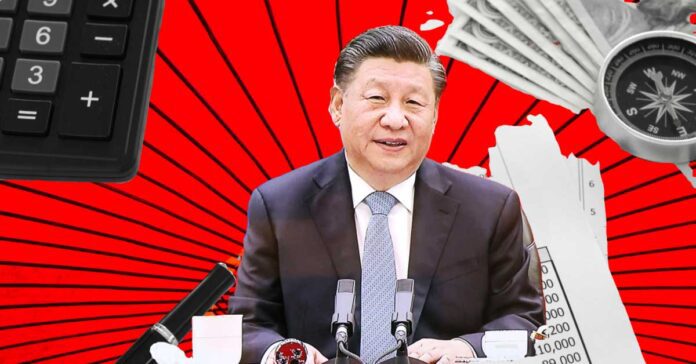How China’s Economy Recovered Post-Pandemic: Recent Blog by Outreinfo
China’s economy is showing signs of recovery from the epidemic, with a 4.5% growth rate in the first quarter of 2023, above experts’ estimates. Louise Loo, the head economist for China at Oxford Economics, has examined these numbers. Loo believes that the consumer-led recovery can persist, citing rising consumer confidence, and the continued release of pent-up demand.
Did the Sharp Surge Stabilise in Q3
When we examine the economic performance throughout the pandemic, we see a significant increase in growth between the first and second quarters of 2021. It compared this increase to the comparable times in 2020, when the economy was severely impacted by the epidemic. The growth rate decreased and reverted to a more steady level in the third quarter of 2021. The point of comparison for this steadiness is the third quarter of 2020 when the epidemic has been effectively contained and economic activity has returned to normal.
Can China Regain its Pre-Pandemic Growth Trajectory?
Prior to the Covid crisis, the economy of China had attained a consistent growth rate of around 6% each year. This resulted from a steady deceleration from the double-digit rise in growth rates seen in the early 2000s. While current growth rates are still lower than pre-pandemic levels, they are a sign that China may resume its prior economic trajectory.
How does this performance compare with the past economic history of China?
Since the establishment of the People’s Republic of China (PRC) in 1949, China has experienced several economic challenges. The People’s Republic of China (PRC) was formed following a protracted and violent civil war between the Communist Party of China (CPC) and the Republic of China (ROC). The country was war-torn and destitute when the new leadership took control, with an agricultural economy and minimal levels of industrialization. The CPC’s first objectives were to develop China into a progressive, powerful, socialist nation through the implementation of a series of economic policies and plans.
- The first five-year plan (1953-1957) should speed up China’s industrialization. The idea was a huge success, with steel output soaring fourfold in four years. The plan failed to account for agricultural productivity, resulting in food shortages and increased inequality.
- The second 5-year plan (1958-1962), commonly referred to as the Great Leap Forward, was a huge attempt to speed up China’s economic growth by mobilizing the public to take part in large-scale corporate and agricultural undertakings. The aim was to establish communes where people would share materials and labor. The strategy was a failure, resulting in widespread starvation, economic collapse, and millions of deaths.
- The Great Leap Forward’s failure sparked a political crisis inside the CPC, resulting in power battles and ideological disagreements. Mao Zedong started the Cultural Revolution in 1966, a radical campaign aimed at ridding the party and society of “bourgeois” tendencies and restoring his leadership. The Cultural Revolution spanned a decade and brought China upheaval, bloodshed, and tyranny. It also caused significant economic disruption, since many enterprises, schools, and institutions were destroyed.
- Mao Zedong’s death in 1976 signaled the end of the Cultural Revolution and the start of a new era of economic reform and opening up. Deng Xiaoping iaoping emerged as China’s supreme leader and started a series of initiatives to liberalize and modernize the Chinese economy. He switched the emphasis away from ideological purity and towards pragmatic progress, as well as away from central planning and towards the market.
- China’s potential for fast growth and development has been unlocked as a result of economic reforms. From 1978 to 2005, China’s GDP increased at an annual pace of 10% on average, making it one of the world’s fastest-growing economies. China also moved hundreds of millions of people out of poverty, raised living standards, and established itself as a worldwide manufacturing and commerce powerhouse.
Is China’s Economic Recovery Sustainable?
Since the late 1970s, China began a series of economic reforms that converted it from a centrally planned to a more market-oriented system. The Chinese economy has seen extraordinary transformations. The changes resulted in fast development, expanded commerce, higher living conditions, and the emancipation of millions of people from poverty. China overtook the United States as the world’s second-biggest economy in 2010 and the world’s largest trading country in 2013.
China approaches these statics with care. Domestic and global conditions, government policies, and unanticipated occurrences all impact economic growth. While China’s economy has shown resilience and recovery, sustainable growth at the same rate seen in the early 2000s.
To accurately analyze China’s economic trajectory, a larger variety of financial signs, such as job rates, investment patterns, and inflation levels, must be considered. These variables give a more complete picture of the economy’s overall health and sustainability.
China’s economy has shown resiliency, growing at a rate of 4.5% in the primary quarter of 2023, above predictions. The slow release of pent-up demand and rising consumer confidence can be linked to this recovery. It is crucial to remember, however, that the current rate of expansion is still lower than pre-pandemic levels. More research and monitoring of numerous economic metrics will be required to evaluate whether China can reach sustained growth rates equal to those witnessed in the early 2000s.
China’s economic changes introduced new obstacles and issues. Degradation of the environment, inequalities in society, corruption, financial instability, population aging, and international disputes are only a few examples. China’s economy must transition from a cheap, labor-intensive model to a high-value-added, innovation-driven model as it grows and confronts increased competition from other nations.
This returns us to the existing condition. The COVID-19 epidemic, which interrupted production, consumption, commerce, and investment, has had a significant impact on China’s economy. The government has taken several measures to combat the virus and revive the economy. They confronted it with structural difficulties, such as debt buildup, excess capacity, trade frictions, and technical rivalry.

